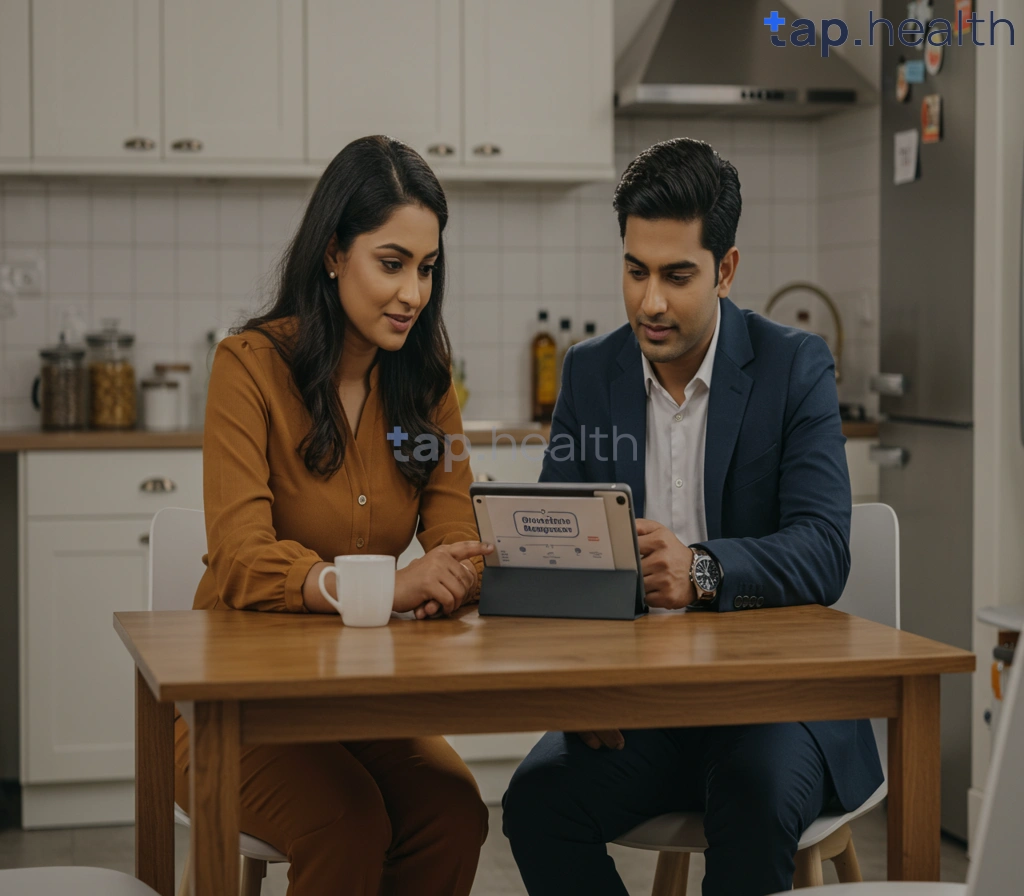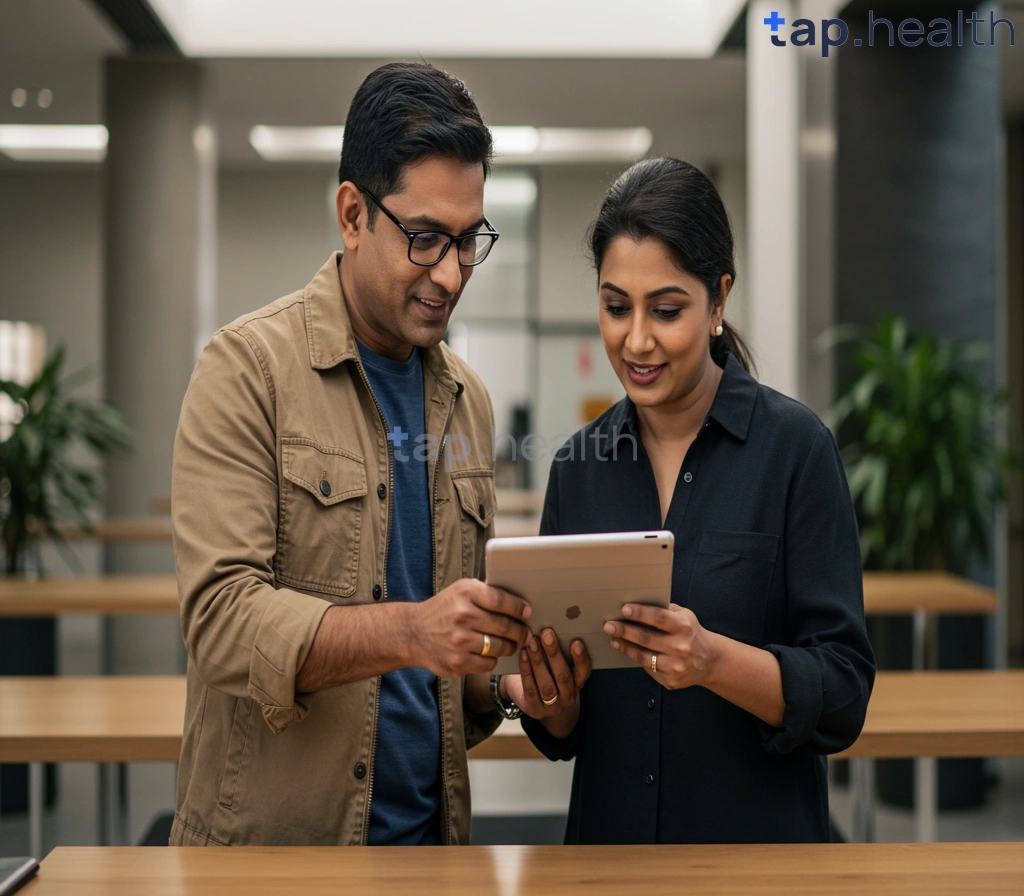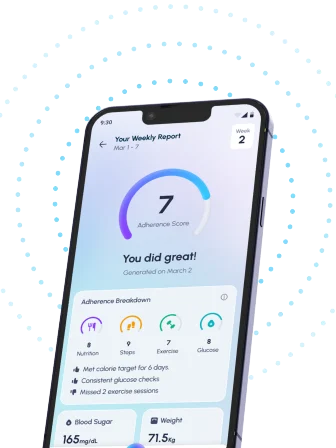Table of Contents
- Conquer Sugar Cravings: A Diabetes Guide
- Understanding and Managing Your Sugar Cravings
- Tips to Reduce Sugar Intake for Better Health
- Healthy Substitutes for Your Favorite Sweet Treats
- Create a Diabetes-Friendly Meal Plan to Curb Cravings
- Frequently Asked Questions
- References
Are you tired of feeling like sugar cravings are controlling your life? Do you have diabetes and struggle to manage those intense sweet tooth urges? You’re not alone! Many people with diabetes face this daily battle, but it doesn’t have to be a losing fight. This blog, Conquer Your Sugar Cravings: A Diabetes Health Guide, is your roadmap to regaining control and achieving better blood sugar management. We’ll explore practical strategies, delicious recipes, and expert tips to help you break free from the sugar cycle and live a healthier, happier life. Let’s get started on your journey to a healthier you!
Conquer Sugar Cravings: A Diabetes Guide
Are you struggling with overwhelming sugar cravings, especially prevalent in tropical climates like India? You’re not alone. Excess sugar consumption significantly increases your risk of developing diabetes, a growing concern globally. In fact, research shows that excessive sugar intake increases diabetes risk by 18%, and India’s per capita sugar consumption sits at a concerning 20 kg per year. This high sugar intake fuels cravings, creating a vicious cycle. But don’t despair; you can break free.
Understanding Your Sugar Cravings
Many factors contribute to sugar cravings, including hormonal imbalances, stress, and even sleep deprivation. In hot and humid climates, the body may crave quick energy boosts, often found in sugary foods and drinks. Understanding the root cause of your cravings is the first step to overcoming them. Consider keeping a food diary to pinpoint triggers.
Practical Strategies for Success
Prioritize whole, unprocessed foods in your diet. These foods provide sustained energy and help regulate blood sugar levels, reducing cravings. Increase your protein and fiber intake; both can help you feel fuller for longer. Stay hydrated by drinking plenty of water throughout the day. Dehydration can sometimes be mistaken for hunger. Manage stress effectively through techniques like yoga or meditation. Finally, ensure adequate sleep. Lack of sleep can disrupt hormone levels, leading to increased cravings.
Taking Control in India and Similar Climates
In India and other tropical countries, where sweet treats are a significant part of the culture, mindful consumption is key. Instead of eliminating sweets entirely (which can lead to bingeing), focus on moderation and choosing healthier alternatives. Opt for fresh fruits over sugary desserts, and remember that even natural sugars should be consumed in moderation. Seek support from a healthcare professional or a registered dietitian. They can provide personalized guidance and help you develop a sustainable plan to manage your sugar cravings and prevent or manage diabetes. For further strategies on managing diabetes, you might find 10 Proven Tips to Effectively Manage Diabetes | Simple Guide helpful. As you age, managing diabetes can present unique challenges; Managing Diabetes as You Age: Challenges and Solutions offers valuable insights.
Understanding and Managing Your Sugar Cravings
Sugar cravings are a common struggle, especially in regions like India and other tropical countries where sweet treats are a significant part of the culinary landscape. The average person consumes around 17 teaspoons (68 grams) of sugar daily, far exceeding the World Health Organization’s recommendation of no more than 6 teaspoons (25 grams) for adults. This excessive sugar intake contributes significantly to various health issues, including diabetes. Understanding the root causes of your cravings is the first step towards effective management.
Identifying Your Sugar Triggers
Many factors influence sugar cravings. Stress, poor sleep, hormonal imbalances, and even dehydration can all lead to a sudden intense desire for sweets. In tropical climates, the constant availability of fresh fruits and sugary drinks further exacerbates this issue. Pay close attention to your diet and lifestyle to pinpoint your personal triggers. Keeping a food diary can be incredibly helpful in identifying patterns.
Strategies for Managing Cravings
Instead of instantly reaching for sugary snacks, try these strategies:
* Eat regular meals and snacks: Avoid prolonged periods of hunger, as this can trigger intense cravings.
* Increase your protein and fiber intake: These nutrients promote satiety and help stabilize blood sugar levels. Include lentils, chickpeas, and other pulses common in Indian cuisine, along with plenty of fresh fruits and vegetables. This is especially important if you are looking to build habits that help control blood sugar levels.
* Choose healthier alternatives: When a craving hits, opt for naturally sweet options like fruits, a small amount of dark chocolate (with high cocoa content), or a handful of nuts.
* Stay hydrated: Sometimes thirst is mistaken for hunger, leading to unnecessary sugar consumption.
* Manage stress effectively: Practice yoga, meditation, or other relaxation techniques to reduce stress levels. Remember that high sugar intake can also impact your thyroid, so learning how to cut back on sugar can be beneficial for overall health.
By understanding your sugar cravings and implementing these practical strategies, you can take control of your diet and significantly reduce your risk of developing or managing diabetes, leading to a healthier and happier life. Consult your doctor or a registered dietitian for personalized advice tailored to your specific needs and dietary preferences within the context of your regional food culture.
Tips to Reduce Sugar Intake for Better Health
Daily consumption of sugary beverages raises diabetes risk by 26%, a stark reminder of the significant impact sugar has on our health, particularly in regions like India and other tropical countries where sugary drinks are prevalent. This underscores the urgency to control our sugar intake and mitigate the risk of developing diabetes. But conquering sugar cravings doesn’t mean eliminating all sweetness; it’s about making smart choices.
Identify Your Sugar Triggers
Understanding what triggers your sugar cravings is crucial. Is it stress, boredom, or specific times of day? Keeping a food diary can help identify patterns and develop strategies to manage those cravings. For instance, instead of reaching for a sugary snack after a stressful day, try engaging in relaxing activities like yoga or meditation. This is especially important in high-stress environments common in many tropical and Indian cities.
Swap Sugary Drinks for Healthy Alternatives
Sugary drinks are a major contributor to high sugar intake. In India and other tropical regions, readily available sweet juices and sodas pose a significant challenge. Swap these for water infused with fruits like lemon, cucumber, or mint; unsweetened tea; or coconut water—a refreshing and naturally hydrating alternative, especially popular in tropical climates. Remember, making small, consistent changes can make a big difference in your overall health.
Embrace Natural Sweeteners
Instead of relying on refined sugar, incorporate natural sweeteners like jaggery (gur) or honey in moderation. These alternatives often contain additional nutrients and antioxidants beneficial for overall health. While these are healthier options, remember moderation is still key in managing blood sugar levels. This is especially vital in countries with a high prevalence of diabetes. For more immediate help with blood sugar, check out these 10 Tips for Immediate Blood Sugar Reduction.
Seek Support and Guidance
If you struggle to manage your sugar cravings, seeking support from a healthcare professional or registered dietitian is highly recommended. They can provide personalized guidance tailored to your specific needs and health conditions, crucial for effectively managing diabetes or preventing its onset. This is especially important in regions with limited access to healthcare. Learning about Top 8 Natural Remedies to Improve Blood Sugar Levels can also be beneficial.
Healthy Substitutes for Your Favorite Sweet Treats
Managing diabetes in tropical and Indian climates often means battling intense cravings for sugary delights. Fortunately, many delicious and healthy alternatives exist that can satisfy your sweet tooth without spiking your blood sugar. Remember, maintaining a balanced diet with approximately 45–60 grams of carbs per meal (adjusting based on individual needs and consultation with your doctor) is crucial for effective diabetes management.
Fruit-Based Alternatives
Instead of processed sweets, embrace the natural sweetness of local fruits. Mangoes, papayas, and bananas are readily available in many Indian and tropical regions and offer a satisfying sweetness. Consider incorporating them into your diet as snacks or desserts. Remember to be mindful of portion sizes, as even fruits contain carbohydrates. A small serving of fresh fruit can be a much healthier substitute for a sugary dessert. For more ideas on healthy snacking options, check out our blog on Healthy Snacking Ideas for Busy Days.
Spice It Up
Indian cuisine is rich in spices that can enhance the flavor of naturally sweet foods, reducing the need for added sugar. Cinnamon, cardamom, and nutmeg not only add delicious aromatic notes but can also help regulate blood sugar levels. Experiment with these spices in your desserts and drinks to create healthier, flavorful alternatives. For instance, try adding a sprinkle of cinnamon to your morning yogurt or a dash of cardamom to your evening chai. And if you’re looking for something to satisfy your sweet tooth before bed, consider reading our guide on What is a Good Bedtime Snack for Diabetics?.
Healthy Sweeteners
Explore natural sweeteners like jaggery (gur) – a popular unrefined sugar in India – or stevia, a natural zero-calorie sweetener. These can be used sparingly as substitutes for refined sugar in recipes. However, moderation is key, as even natural sweeteners contribute to your daily carbohydrate intake. Always check the nutritional information and adjust your meal plan accordingly. Consult a doctor or registered dietitian for personalized dietary advice tailored to your needs and the specific carbohydrate count of your chosen alternatives.
Create a Diabetes-Friendly Meal Plan to Curb Cravings
Understanding Your Cravings
Sugar cravings are a common challenge, especially for individuals managing diabetes. These cravings often stem from blood sugar fluctuations and can hinder efforts to maintain healthy blood glucose levels. The good news is that up to 80% of Type 2 diabetes cases can be delayed or prevented through lifestyle changes, including dietary modifications. A well-planned, diabetes-friendly meal plan is crucial for managing cravings and preventing blood sugar spikes. This means focusing on foods that release glucose slowly and keep you feeling full and satisfied.
Building Your Diabetes-Friendly Meal Plan
For Indian and tropical climates, incorporating readily available, locally sourced fruits and vegetables is key. Think seasonal produce like mangoes (in moderation), papaya, and bitter gourd, rich in vitamins and fibre. Incorporate whole grains like brown rice, millets (ragi, jowar), and roti made from whole wheat. Lean proteins such as lentils (dal), fish, and chicken are excellent choices. Spice up your meals with fragrant herbs and spices – cinnamon, turmeric, and ginger are known to help regulate blood sugar levels. Remember to control portion sizes to avoid overeating and subsequent blood sugar spikes. Planning meals ahead can significantly help with this, as detailed in our guide on How to Lose Weight with Diabetes Diet Plan.
Actionable Tips for Success
* **Plan your meals and snacks ahead of time:** This prevents impulsive, unhealthy choices when cravings strike.
* **Stay hydrated:** Drinking plenty of water can often alleviate mild cravings.
* **Prioritize fibre:** High-fibre foods promote satiety and regulate blood sugar.
* **Listen to your body:** Pay attention to hunger cues and eat mindfully.
Taking Control in Tropical Climates
In hot and humid climates, staying hydrated is paramount. Include refreshing drinks like coconut water (in moderation) and herbal teas. Remember that consistent effort is key to managing diabetes and conquering sugar cravings. For ideas on festive, diabetes-friendly meals, check out our blog on Creating Diabetes-Friendly Dishes for the Holidays. Consult with a healthcare professional or a registered dietitian to create a personalized meal plan tailored to your individual needs and preferences. They can offer region-specific advice and help you navigate the unique challenges of managing diabetes in your environment.
Frequently Asked Questions
Q1. What is the biggest risk factor for developing diabetes, especially in tropical climates like India?
High sugar consumption significantly increases the risk of developing diabetes, particularly in regions like India where sweet treats are a common part of the culture.
Q2. Why do I get sugar cravings, and how can I manage them effectively?
Sugar cravings can stem from hormonal imbalances, stress, lack of sleep, or other factors. Effective management involves eating whole, unprocessed foods, increasing protein and fiber intake, staying hydrated, managing stress levels, and ensuring sufficient sleep.
Q3. What kind of diet is recommended for managing blood sugar and curbing cravings?
A diabetes-friendly meal plan rich in locally sourced fruits, vegetables, whole grains, and lean proteins, combined with portion control, is highly recommended. This helps manage blood sugar levels and reduces cravings.
Q4. Are there any limitations or challenges in managing sugar cravings and diabetes?
Managing sugar cravings and diabetes requires commitment and may involve challenges. Cultural norms surrounding sweets can be difficult to overcome. It’s crucial to seek professional guidance from healthcare providers or registered dietitians for personalized support.
Q5. Where can I find additional support and guidance for managing my sugar intake and diabetes?
Consult healthcare providers or registered dietitians for personalized plans and support. They can provide tailored advice and address your specific concerns.
References
- A Practical Guide to Integrated Type 2 Diabetes Care: https://www.hse.ie/eng/services/list/2/primarycare/east-coast-diabetes-service/management-of-type-2-diabetes/diabetes-and-pregnancy/icgp-guide-to-integrated-type-2.pdf
- Children with Diabetes : A resourse guide for families and school. : https://www.health.ny.gov/publications/0944.pdf




